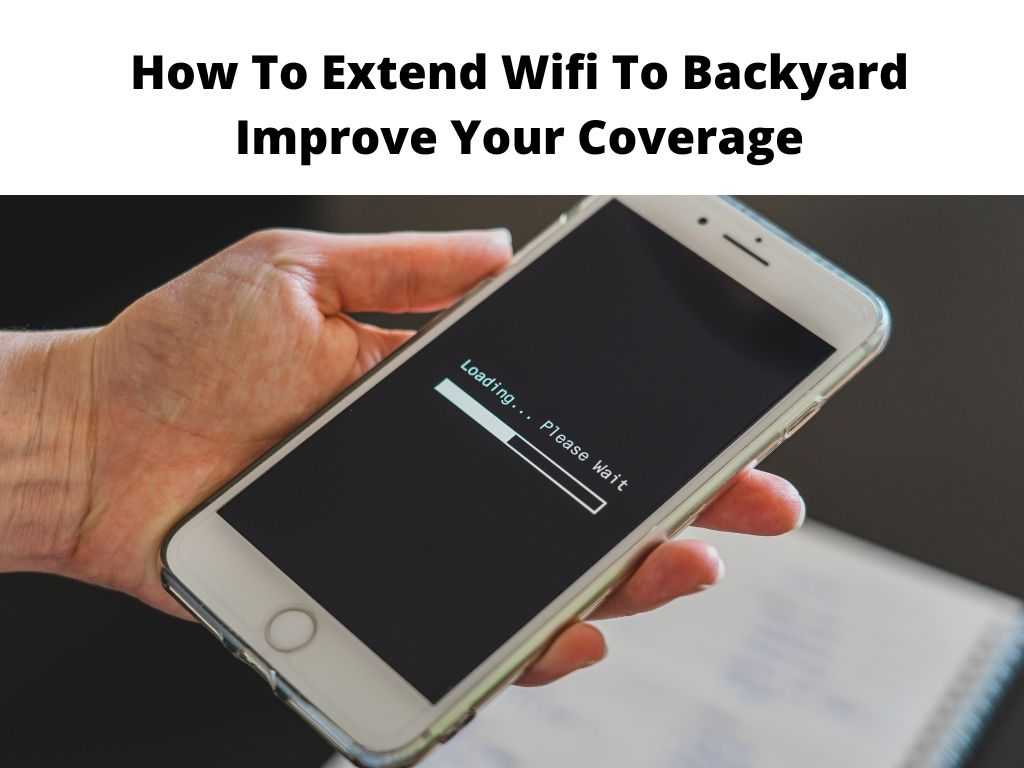From the viewpoint of a seasoned expert, extending Wi-Fi to your backyard might seem like a complex task, but I assure you, with the right guidance, you can accomplish it smoothly.

TL;DR: You can extend Wi-Fi to your backyard using methods such as Wi-Fi extenders, powerline adapters, Mesh Wi-Fi systems, and outdoor access points. Ensure you have a solid and reliable internet connection in the first place, which you can then distribute across your property.
Scroll down to get a detailed answer
Now, let’s get into the finer details.
Table of Contents
Understanding Wi-Fi Signal Strength
To begin with, you need to understand your Wi-Fi signal strength. This is essentially the measure of how well your device is receiving the signals transmitted by your router.
Various factors can impact this, such as the distance from your router, physical obstructions, and even the type of materials used in your home’s construction.
Choosing the Right Equipment
To extend your Wi-Fi signal to your backyard, certain tools can come handy. Here are some that I recommend:
- Wi-Fi Extenders: Also known as Wi-Fi repeaters or boosters, these devices receive the existing Wi-Fi signal, amplify it, and then broadcast the strengthened signal.
- Powerline Adapters: These use your home’s electrical wiring to create a wired internet connection without the need for extensive cabling.
- Mesh Wi-Fi Systems: Mesh Wi-Fi systems consist of a main router connected to your modem and a series of satellite modules, or nodes, that you place throughout your house.
- Outdoor Access Points: These are specifically designed to withstand outdoor conditions and are excellent for providing Wi-Fi coverage in large outdoor areas.
Steps to Extend Wi-Fi to Your Backyard
Following these steps should help in extending your Wi-Fi coverage:
- Assess your current Wi-Fi Coverage: Use a Wi-Fi analyzer app to find out where the signal strength drops.
- Choose the right equipment: Based on your needs and backyard size, choose from Wi-Fi extenders, powerline adapters, Mesh Wi-Fi systems, or outdoor access points.
- Position your equipment properly: Place your Wi-Fi extenders halfway between your router and the area you want to cover. If you’re using a Mesh system, place the nodes strategically around your property.
- Configure your devices: Ensure all devices are set up correctly, following the manufacturer’s instructions.
- Test your new coverage: Use the Wi-Fi analyzer app again to ensure your backyard is now within range.
The Devil is in the Details: Configuring Your Devices
Every device comes with its own specific set of instructions for configuration. I recommend you follow these instructions to the letter. If not set up correctly, your new Wi-Fi equipment might not perform optimally, leaving you with weak signals in your backyard.
Don’t hesitate to reach out to the manufacturer’s customer support if you face any issues during the setup. They are there to assist you and can provide valuable insights into the process.
Expanding your Network: Wired or Wireless
While configuring your devices, you may have a choice between setting up a wired connection or a wireless one. It might be worthwhile to consider both options and their merits.
Wired connections, while a bit more challenging to set up, generally provide a more stable and stronger signal. Ethernet cables or powerline adapters are common tools for establishing a wired connection.
Wireless connections, on the other hand, are easier to set up and offer more flexibility. Wi-Fi extenders or Mesh Wi-Fi systems typically create wireless connections.
Ultimately, the choice depends on your specific needs and constraints.
Optimizing Your Setup: Positioning Your Equipment
A useful suggestion would be to take the time to find the perfect spot for your devices. The location can significantly influence the signal strength in your backyard.
If you’re using a Wi-Fi extender, place it halfway between your router and the backyard. This way, it can pick up a strong signal from the router and extend it to the backyard.
Mesh Wi-Fi systems offer more flexibility. Place the main node near your modem and the remaining nodes at strategic locations around your home to ensure comprehensive coverage.
A Few Additional Tips
It might be worthwhile to consider a few more aspects:
- Internet Speed: Even if you have an excellent Wi-Fi setup, if your internet connection itself is slow, you won’t have a good experience.
- Security: Don’t forget to secure your network to prevent unauthorized access.
- Maintenance: Regularly update your devices and check for any issues to maintain optimal performance.
Conclusion
Extending Wi-Fi to your backyard can significantly enhance your outdoor experiences, allowing you to enjoy seamless internet connectivity while you relax in the open. With a bit of planning and the right equipment, you can achieve robust Wi-Fi coverage throughout your property.
FAQ
How far does WiFi reach outside?
The Wi-Fi signal of a typical home router can reach up to 150 feet indoors and 300 feet outdoors. However, this can vary based on the router model and environmental conditions.
How many meters can Wi-Fi reach?
A typical Wi-Fi router can cover around 45 meters indoors and 92 meters outdoors. But remember, this range is influenced by various factors such as the router’s specifications and obstacles present.
How do I make my Wi-Fi reach further?
You can extend your Wi-Fi range by using devices like Wi-Fi extenders, powerline adapters, mesh Wi-Fi systems, or outdoor access points. Also, placing your router in a central location can help distribute the signal more evenly.
Can Wi-Fi go through walls?
Yes, Wi-Fi signals can go through walls, but certain materials like concrete or metal can greatly reduce the signal strength. Therefore, the more walls and obstructions, the weaker your Wi-Fi signal will be.


